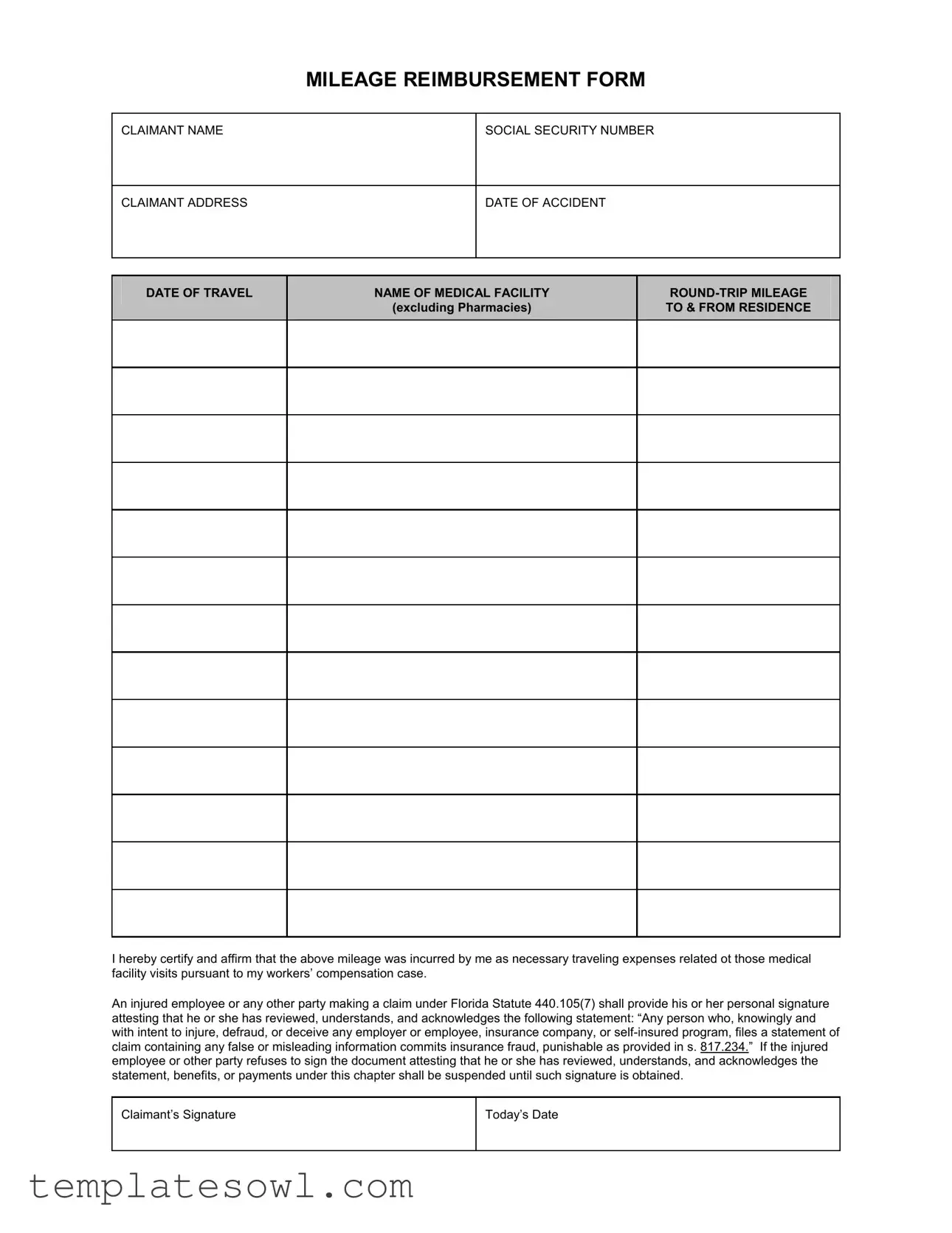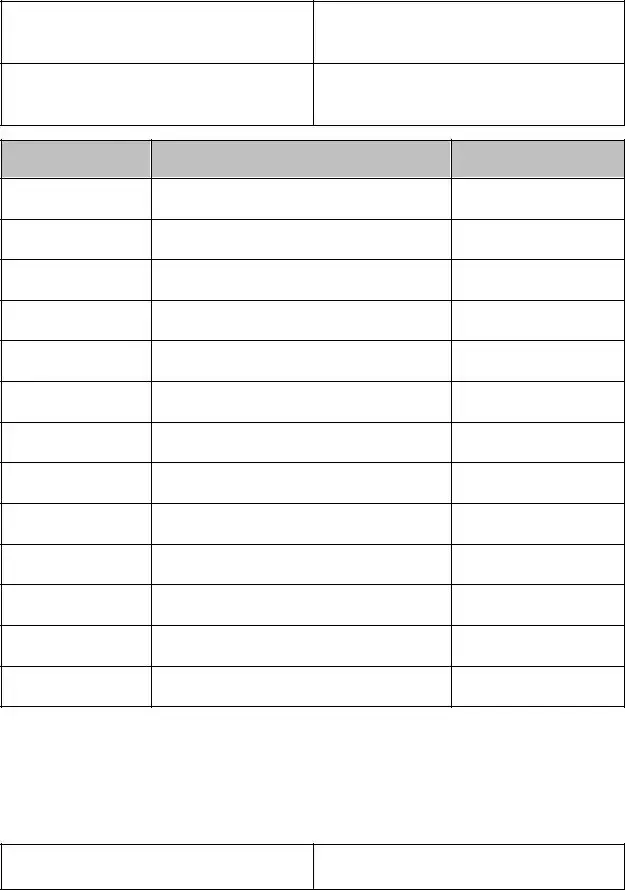What is the Mileage Reimbursement Form?
The Mileage Reimbursement Form is a document designed for individuals who are seeking reimbursement for travel expenses related to medical visits as part of a workers' compensation claim. This form provides essential details such as the claimant's personal information and specific travel details to facilitate the reimbursement process.
Who needs to fill out this form?
Anyone who has incurred mileage costs while traveling to a medical facility for treatment related to a workers’ compensation claim should fill out this form. This includes not only injured employees but may also involve other authorized parties involved in the claim process.
What information is required on the form?
The form requires several pieces of information: your name, Social Security number, address, the date of the accident, and the date of your travel. Additionally, you must provide the name of the medical facility you visited and specify the round-trip mileage from your residence. Each detail helps substantiate your claim for reimbursement.
Why is a signature required on the form?
By signing the form, you are certifying that the mileage recorded was necessary for your visits to the medical facility. This signature also indicates that you understand and acknowledge the serious implications of submitting misleading or false information, which could be considered insurance fraud.
What happens if I refuse to sign the form?
If you refuse to sign the Mileage Reimbursement Form, it can have serious consequences. Payments or benefits associated with your workers' compensation case may be suspended until you provide the necessary signature. It’s crucial to understand that this step is mandatory for the processing of your reimbursement request.
How should I calculate the round-trip mileage?
To calculate your round-trip mileage, measure the distance from your home to the medical facility, and then double it to account for the return trip. Make sure to use reliable mapping tools or car odometer readings for accuracy. Proper documentation of this mileage is essential for a successful claim.
What should I do if I have more questions about the form?
If you have additional questions or need assistance with the Mileage Reimbursement Form, it is advisable to reach out directly to your workers' compensation representative or to the relevant contact person at your employer’s human resources department. They can provide guidance and clarify any concerns you may have.

